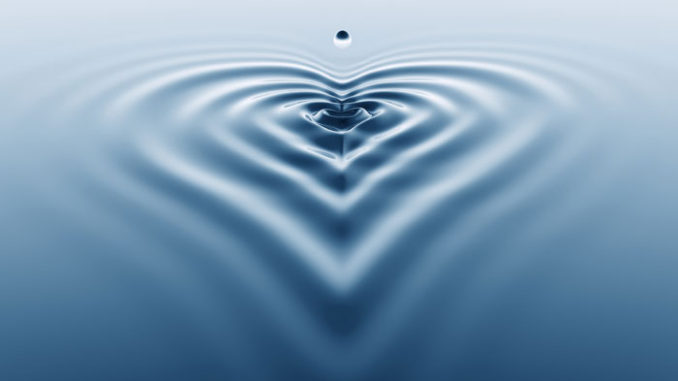
There is no resource more precious than water. There is also no resource that is misused, abused, misallocated, and misunderstood the way water is. Safe drinking water, healthy and intact natural ecosystems, and a stable food supply are a few of the things at stake as our water supply is put under greater and greater stress.
The picture might look grim, but opportunities to be more efficient abound. Many people have had water-saving etiquette pumped into them at one point or another, so hopefully we can make a good case for conserving the stuff with practical, everyday water-saving strategies as well as some more high-tech approaches.
Check for Leaks
A dripping faucet can waste 20 gallons of water a day. A leaking toilet can use 90,000 gallons of water in a month. Get out the wrench and change the washers on your sinks and showers, or get new washerless faucets. Keeping your existing equipment well maintained is probably the easiest and cheapest way to start saving water.
Install Special Water-Saving Fixtures
New, low-volume or dual- flush toilets, low-flow showerheads, water-efficient dishwashers and clothes washing machines can all save a great deal of water and money. Aerators on your faucets can significantly reduce water volume; water-saving showerheads can cut the volume of water used down to 1.2 gallons per minute or less, and some even have a “pause button” to let you stop the water while soaping up or shampooing. Together, those changes nearly cut in half the household’s daily use, saving a considerable amount of water – and passing that savings on to your water bill, as well as your water heating bill.
Don’t Waste
All the water that goes down the drain, clean or dirty, ends up mixing with raw sewage, getting contaminated, and meeting the same fate. Try to stay aware of this precious resource disappearing and turn off the water while brushing your teeth or shaving and always wash laundry and dishes with full loads. When washing dishes by hand, fill up the sink and turn off the water. Take shorter showers or, as the old joke goes, shower with a friend. To put things in perspective, take a quick look at your next water bill when it arrives. It probably won’t be costing you too much, but the average household consumes multiple thousands of gallons each month.
Drink Tap Water
By many measures, bottled water is a scam. In most first-world countries, the tap water is provided by a government utility and is tested regularly. (a) Bottled water is not as well regulated and studies have shown that it is not even particularly pure. (b) A four-year study of bottled water in the U.S. conducted by NRDC found that one-fifth of the 103 water products tested contained synthetic organic chemicals such as the neurotoxin xylene and the possible carcinogen and neurotoxin styrene. (c) Much bottled water doesn’t come from “Artesian springs” and is just tap water anyhow. (d) Not only is it more expensive per gallon than gasoline, bottled water incurs a huge carbon footprint from its transportation, and the discarded bottles are a blight. It’s no wonder that some people even think it’s a sin. If you want to carry your water with you, get a bottle and fill it. If your water at home tastes funny, try an activated charcoal or ceramic filter.
Plant a Low-Water Garden
Naturalize it using locally appropriate plants that are hardy and don’t need a lot of water. If you have to water, do it during the coolest part of the day or at night to minimize evaporation. Xeriscaping is a method of landscaping that utilizes only native and low water plants.
Harvest Rain Water
Put a rain barrel on your downspouts and use this water for irrigation. Rain cisterns come in all shapes and sizes ranging from larger underground systems to smaller, freestanding ones.
Recycle Your Grey-water
Water that has been used at least once but is still clean enough for other jobs is called greywater. Water from sinks, showers, dishwashers, and clothes washers are the most common household examples. Toilet water is often called “blackwater” and needs a different level of treatment before it can be reused. Grey-water can be recycled with practical plumbing systems like the Aqus, or with simple practices such as emptying the fish tank in the garden instead of the sink. One way or another, avoid putting water down the drain when you can use it for something else.
Take Your Car/ Vehicle to a Responsible Car Wash
Car washes are often more efficient than home washing and treat their water rather than letting it straight into the sewer system. But check to make sure that they clean and recycle the water. Better yet, try the waterless car wash.
Report Leaks in Your Community
Report broken pipes, open hydrants, and excessive waste. Don’t be shy about pointing out leaks to your friends and family members, either. They might have tuned out the dripping sound a long time ago
Watch What You Put Down the Drain
Water sources have to be protected. In many closed loop systems like those in cities around the Great Lakes, waste water is returned to the Lake that fresh water comes out of. Don’t pour chemicals down drains, or flush drugs down toilets; it could come back in diluted form in your water.
Matter referenced:
https://www.treehugger.com/how-to-go-green-water-4858660
By: Dr. Bhawana Asnani.
Happy to see Reviews, Additions, Suggestions and Comments, further.

Leave a Reply
You must be logged in to post a comment.